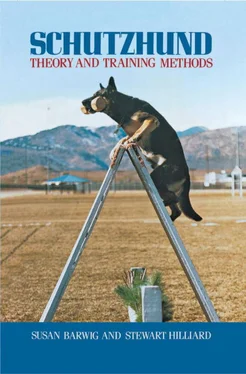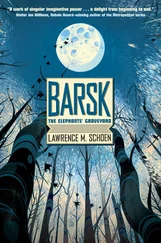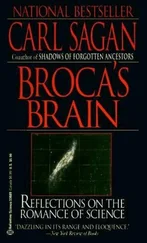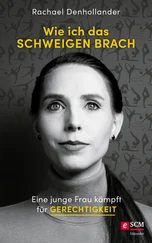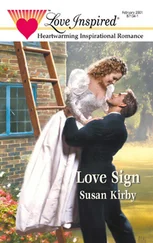Susan Barwig - Schutzhund
Здесь есть возможность читать онлайн «Susan Barwig - Schutzhund» весь текст электронной книги совершенно бесплатно (целиком полную версию без сокращений). В некоторых случаях можно слушать аудио, скачать через торрент в формате fb2 и присутствует краткое содержание. Город: New York, Год выпуска: 1991, ISBN: 1991, Издательство: Howell Book House, Жанр: Справочники, Домашние животные, на английском языке. Описание произведения, (предисловие) а так же отзывы посетителей доступны на портале библиотеки ЛибКат.
- Название:Schutzhund
- Автор:
- Издательство:Howell Book House
- Жанр:
- Год:1991
- Город:New York
- ISBN:978-0-87605-731-5
- Рейтинг книги:4 / 5. Голосов: 1
-
Избранное:Добавить в избранное
- Отзывы:
-
Ваша оценка:
- 80
- 1
- 2
- 3
- 4
- 5
Schutzhund: краткое содержание, описание и аннотация
Предлагаем к чтению аннотацию, описание, краткое содержание или предисловие (зависит от того, что написал сам автор книги «Schutzhund»). Если вы не нашли необходимую информацию о книге — напишите в комментариях, мы постараемся отыскать её.
Schutzhund — читать онлайн бесплатно полную книгу (весь текст) целиком
Ниже представлен текст книги, разбитый по страницам. Система сохранения места последней прочитанной страницы, позволяет с удобством читать онлайн бесплатно книгу «Schutzhund», без необходимости каждый раз заново искать на чём Вы остановились. Поставьте закладку, и сможете в любой момент перейти на страницу, на которой закончили чтение.
Интервал:
Закладка:
Scenting potential for tracking work can be ascertained early as well. The tracking test is conducted by having the dog’s owner engage in light play with the pup. Then he runs abruptly to a hiding place (a hedgerow or large tree, perhaps). When he is hidden from the dog’s view, he prepares a scent pad. He lays down a strong scent by treading down a surface about a yard square. After a minute or two on the scent pad the tracklayer sights on a second hiding place and walks in a straight line to it. The wind should be at his back. He then returns on exactly the same path back to the scent pad, and then once again retraces his steps to the hiding place. Thus the track has been walked on three times. When the dog’s handler has reached his hiding place, the dog is led to the beginning of the scent pad and encouraged to find its master. The evaluator observes whether the dog uses its nose or its eyes during the search. Did it pick out the scent at the pad and attempt to follow the scent? Did it complete the track quickly and with concentration or slowly and with disinterest? When it finds its master the dog should be praised enthusiastically and rewarded with a piece of food.
Other characteristics regarding the dog’s trainability and temperament can also be assessed. Willingness can be observed by watching the rapport between dog and owner. However, it is important to recognize possible incompatibility between the temperaments of the handler and dog. A mismatch can prevent a good dog from realizing its potential.
The dog’s confidence and nerves can be evaluated under a number of situations. Its reaction to sounds can be evaluated by rattling pot lids while the source of the sound is not visible. The following reactions are possible:
1. The dog shows interest and moves toward the sound.
2. It ignores the noise.
3. It pricks up its ears but remains stationary.
4. It is frightened.
Another sound test involves firing a blank pistol at a distance of about ten paces. The following reactions are possible:
1. The dog is not frightened.
2. It is very sensitive and reacts aggressively.
3. It is timid and backs away.
The dog’s reaction to visual stimuli can be noted as well. An umbrella is opened abruptly at a distance of approximately five feet from the dog. Possible reactions are the same as those for noise, above.
In all the auditory and visual tests, it is extremely important to evaluate how the dog recovers from stress. If it reacts strongly and adversely to a stimulus but then adjusts quickly to the situation, this is a very positive indication. It is unrealistic to expect either a puppy or an adult to be completely brave. At one point or another in their lives, all dogs will experience fear. Our main concern is how they deal with it.
The final test of confidence involves the approach of two strangers. The first is friendly to the handler and the dog. From this encounter we can draw certain conclusions. If the dog is friendly to the stranger, it indicates self-confidence. On the other hand, if it retreats from a harmless stranger, we can conclude that it lacks boldness. Next, the second stranger approaches the dog in a threatening manner, appearing as suspicious and ominous as possible. If the dog becomes alert and threatens the stranger, the stranger retreats. This test is only performed on older puppies of at least twelve months. It is important to note that a hysterically aggressive reaction is as undesirable as dullness or outright fear. We prefer the dog that surges forward into the leash, possibly barking, and shows a strong desire to make physical contact with the hostile stranger.
One of the most commonly used tests of a dog’s fighting spirit is the Henze courage test, modified by the Menzels, which proceeds as follows: “The agitator runs away quickly. As soon as he has run some fifty paces the dog is set loose and encouraged to ‘get’ the fleeing man. Right before the dog reaches him, the agitator turns and threatens the dog with a stick and by yelling at it.” Fighting spirit is seen in the dog that flies into the agitator without slowing down and bites as hard and as full as it can (the agitator wears a sleeve).
This test is one of the integral parts of the Schutzhund examination. Although very revealing in many cases, the Henze courage test must be interpreted in light of the dog’s past experience. A dog that performs a creditable courage test without any previous experience in bite-work training would rate as extraordinarily powerful in nearly anyone’s book, an example of an exceptionally good genetic endowment. However, we must look differently at another dog that has its Schutzhund III and that has already received a great deal of training in bite work. When this animal bites well during the courage test, its performance is not so much a demonstration of good character as of good training. To put it another way, its character is masked by its training and will only be more fully revealed in a situation that is more unusual for it.
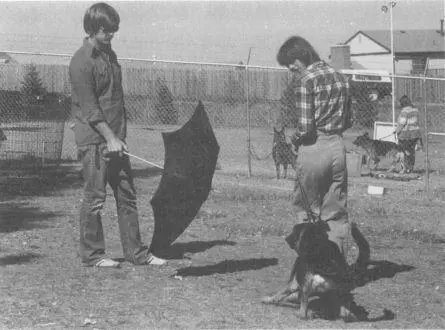
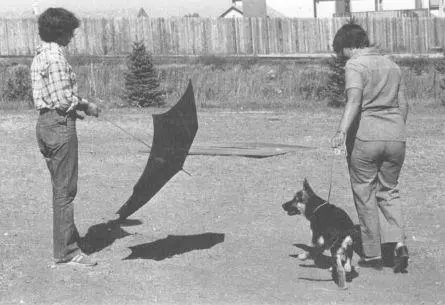
The final part of the courage test, which is called the “double stimulus” test, serves to unmask those dogs that bite because they have been trained to bite the sleeve rather than because they desire to protect their handler. After the dog is engaged in a fight with an agitator wearing a sleeve, the agitator then stands motionless. An unprotected assailant (no sleeve and no protective clothing to “key” the dog) then attacks the dog’s handler. It is fascinating to observe whether the dog will continue to guard the agitator with the sleeve, or if it will defend its handler from attack. (The dog is on leash and wears a leather muzzle during this test.) Interestingly enough, normally the more formal bite-work training the animal has undergone, the more preoccupied it will be with the sleeve and thus the less likely it will be to defend its handler. On the other hand, few untrained dogs will have the nerve to try to bite either person when muzzled like this.
Many of these evaluative tools have now become part of police dog tests in Germany and elsewhere.
To summarize, the very promising Schutzhund dog will:
1. show both interest in searching for its handler and also a tendency to immediately use its nose in order to do so
2. be very interested in playing with and retrieving objects thrown for it
3. be either undisturbed by the approach of a friendly stranger or overtly friendly toward him
4. show both an eagerness to follow its handler and stay near him as well as a tendency to go off exploring on its own
5. be frightened by very little, and when it is frightened by something it will soon lose its fear and forget the incident
6. immediately and vigorously bite any object like a burlap sack that is moved rapidly past it and be oblivious of any attempt to frighten it
7. move very strongly toward a menacing stranger (when the dog is at least one year old), trying to make physical contact with him, but not exhibiting any signs of hysterical or fear-motivated aggressiveness.
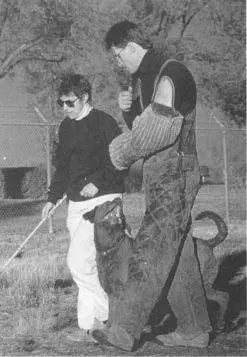
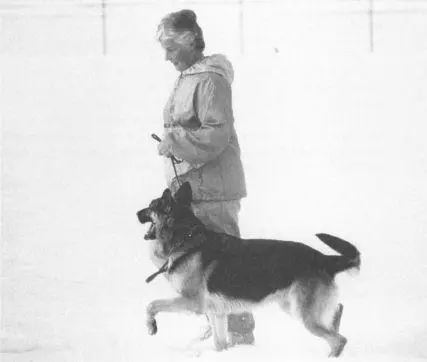
3
Интервал:
Закладка:
Похожие книги на «Schutzhund»
Представляем Вашему вниманию похожие книги на «Schutzhund» списком для выбора. Мы отобрали схожую по названию и смыслу литературу в надежде предоставить читателям больше вариантов отыскать новые, интересные, ещё непрочитанные произведения.
Обсуждение, отзывы о книге «Schutzhund» и просто собственные мнения читателей. Оставьте ваши комментарии, напишите, что Вы думаете о произведении, его смысле или главных героях. Укажите что конкретно понравилось, а что нет, и почему Вы так считаете.
